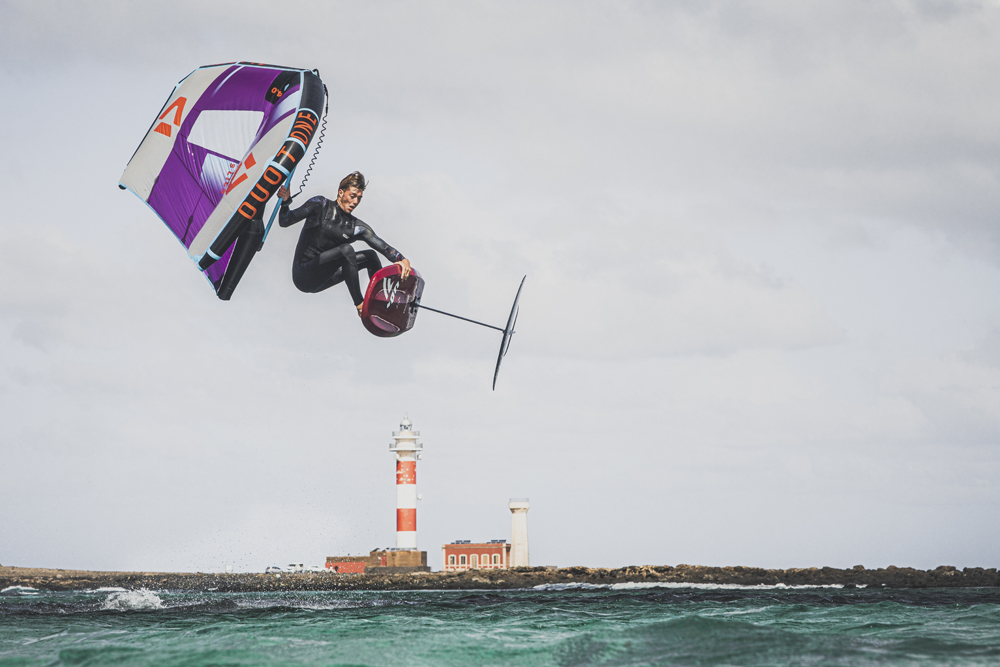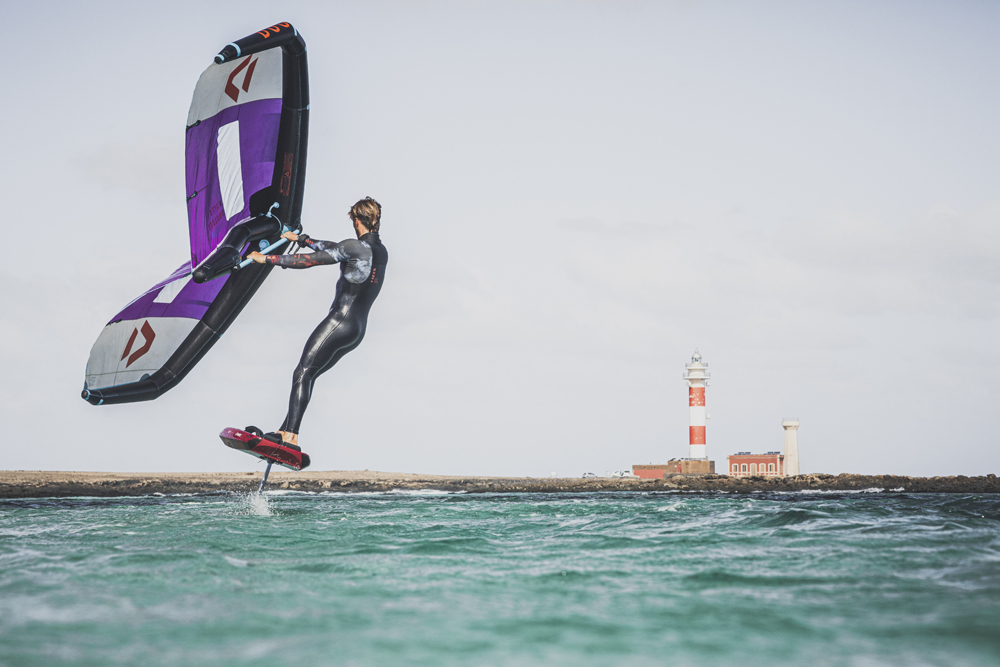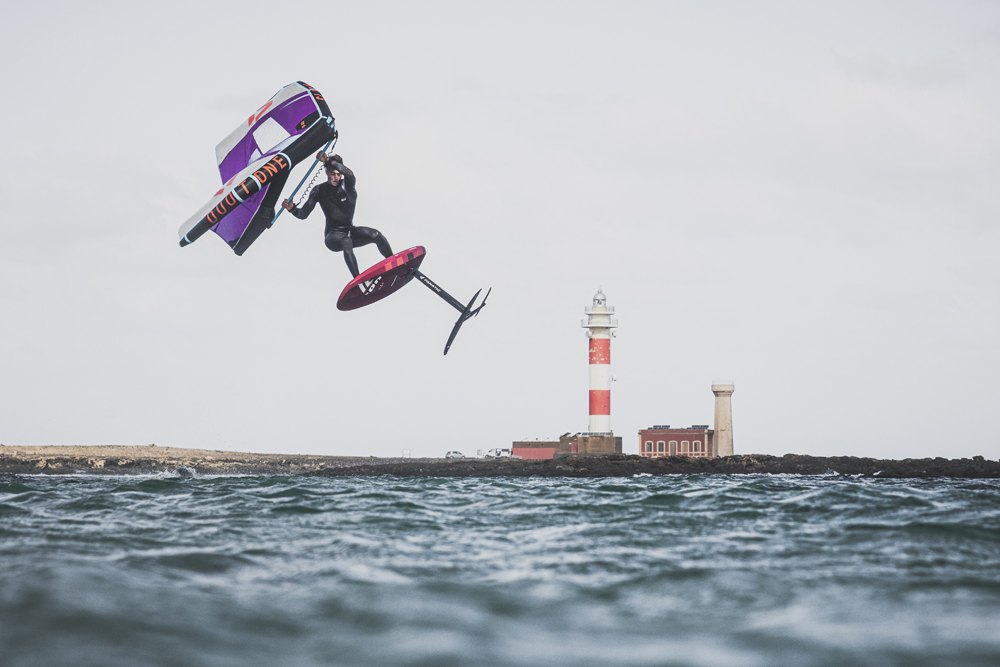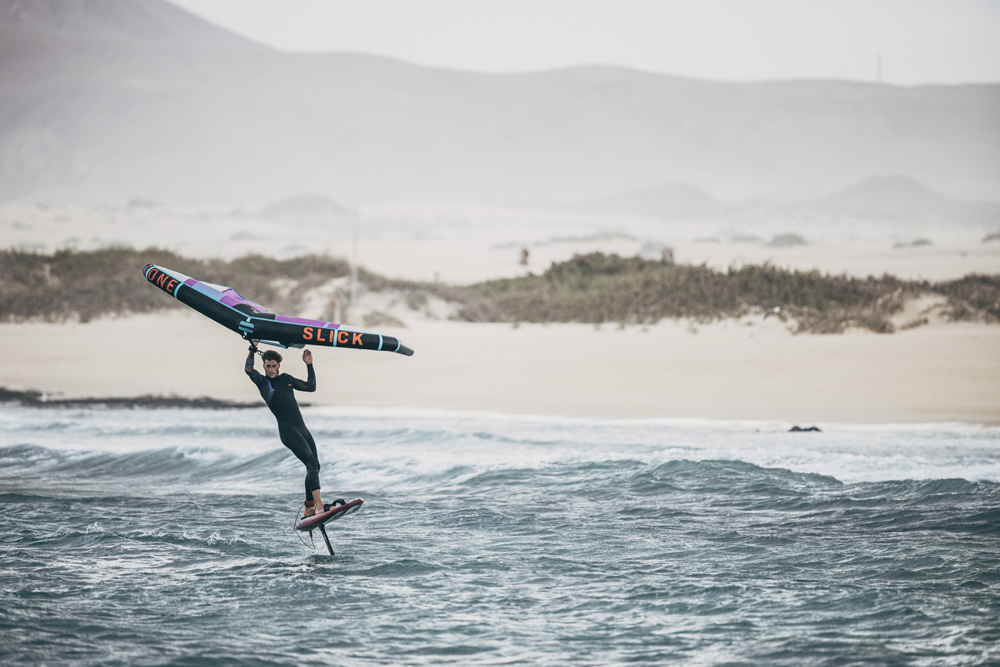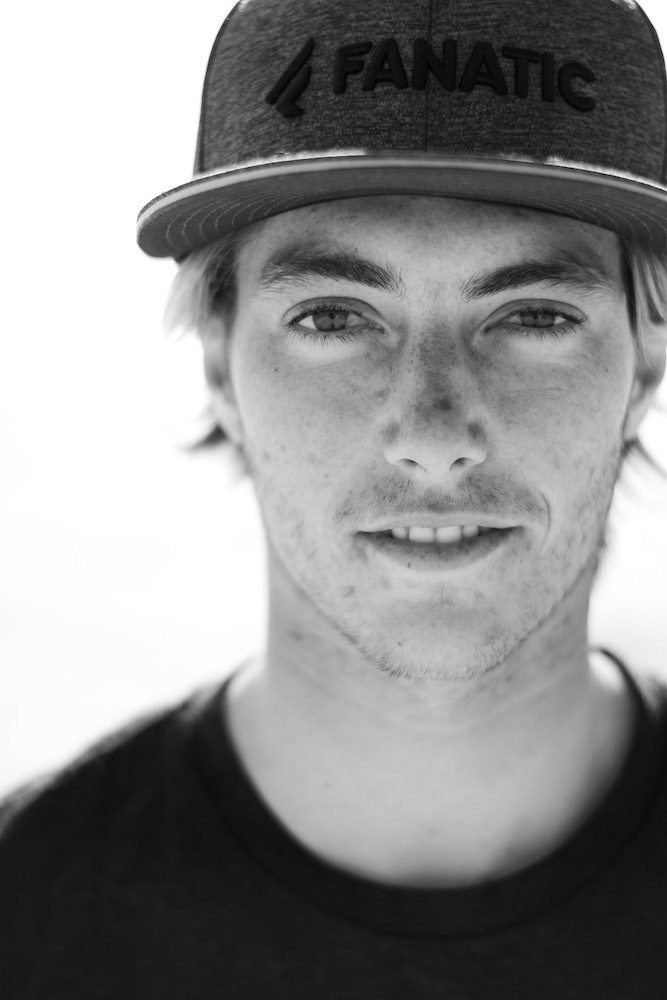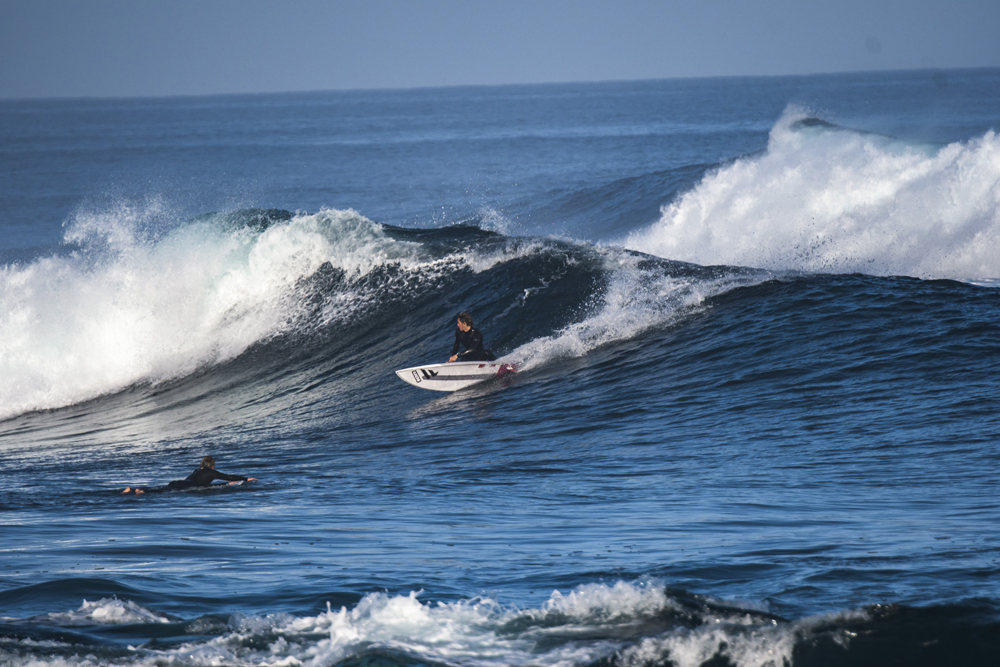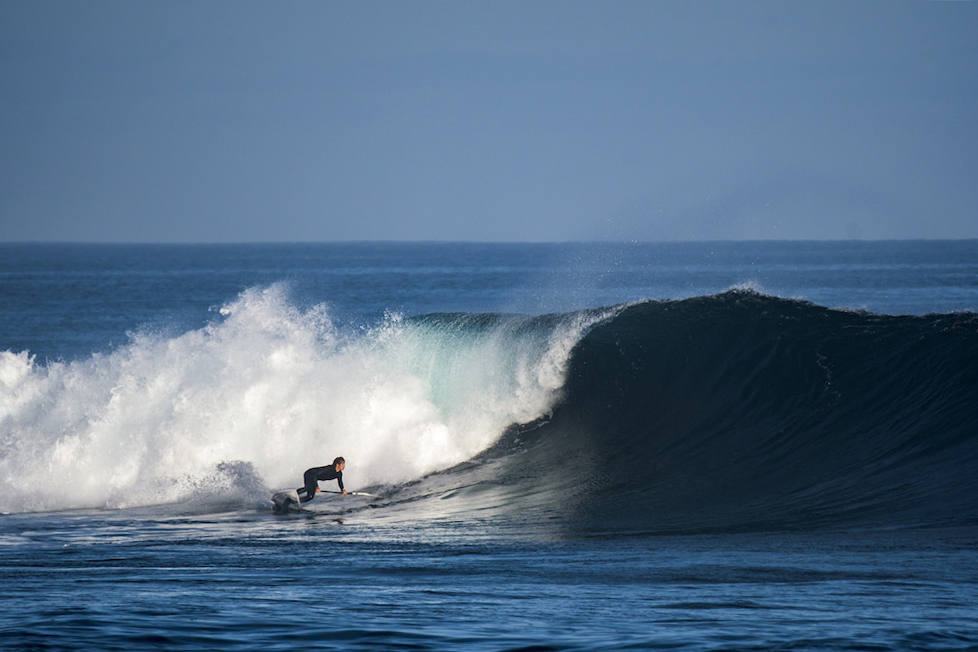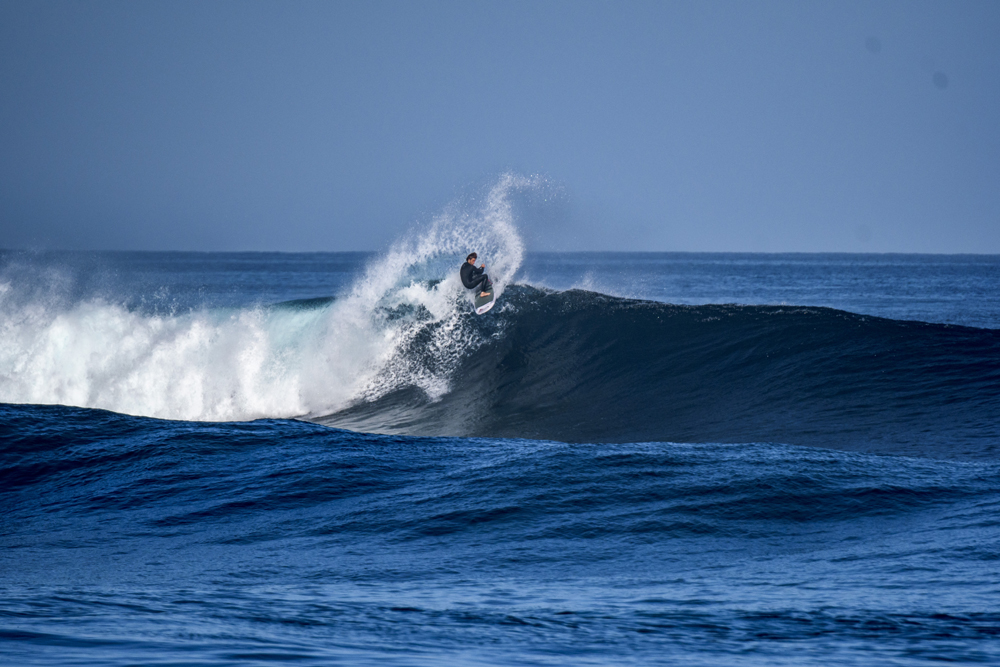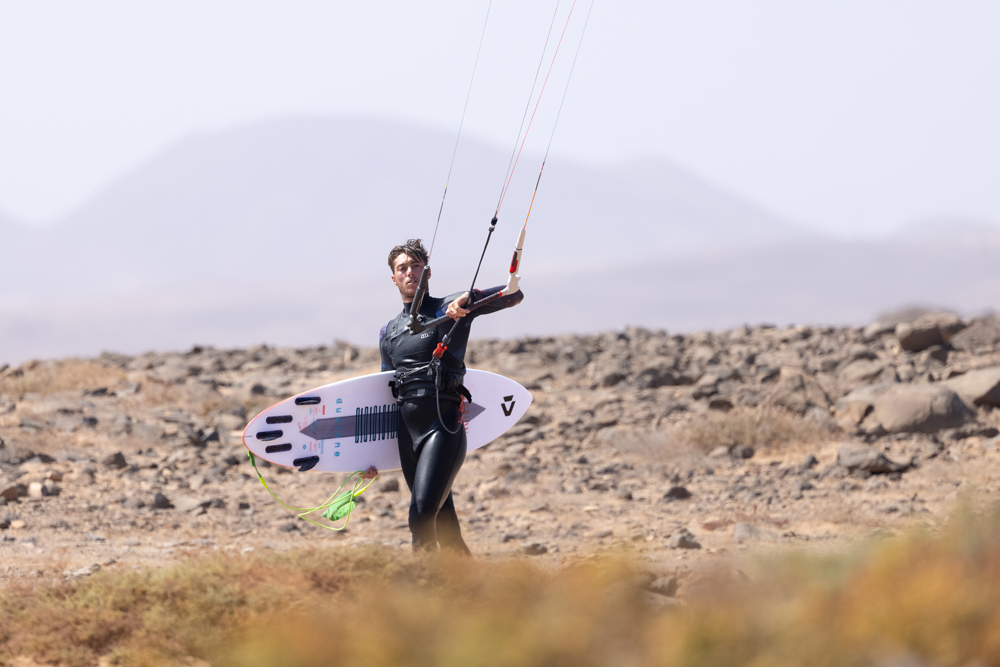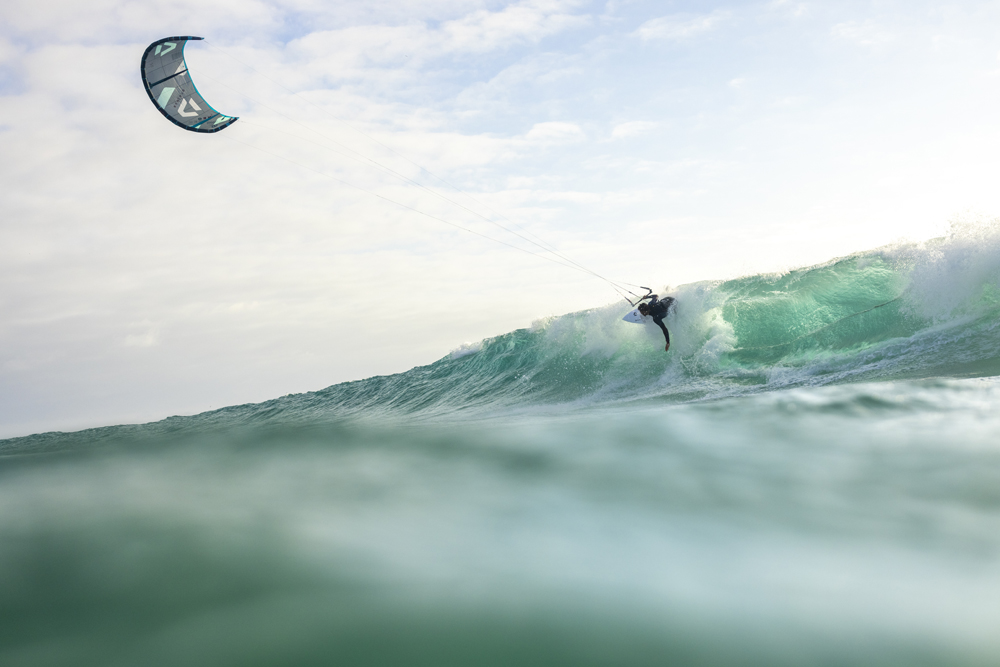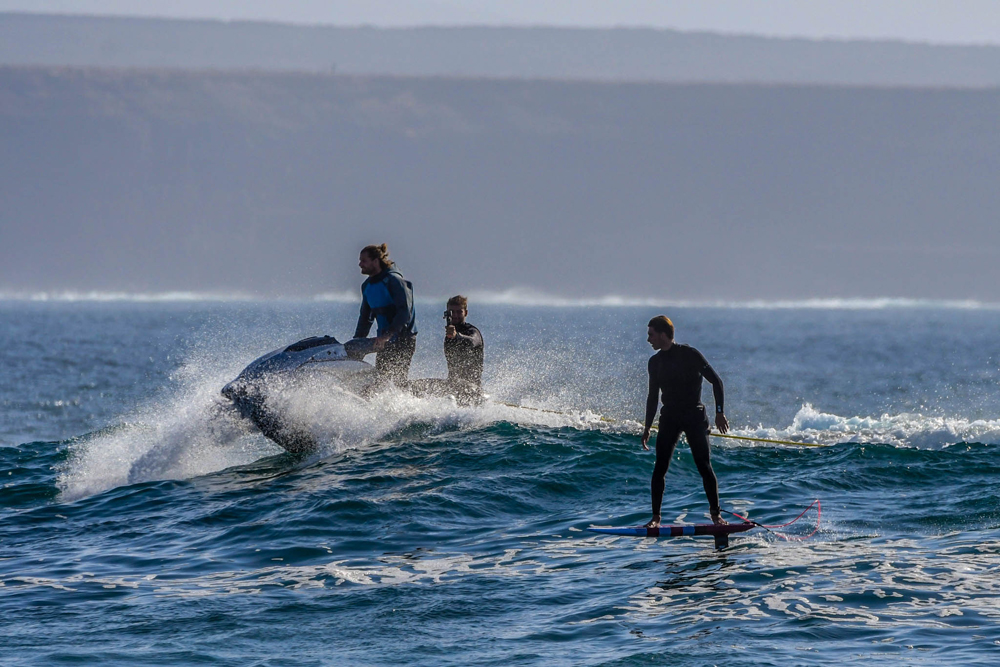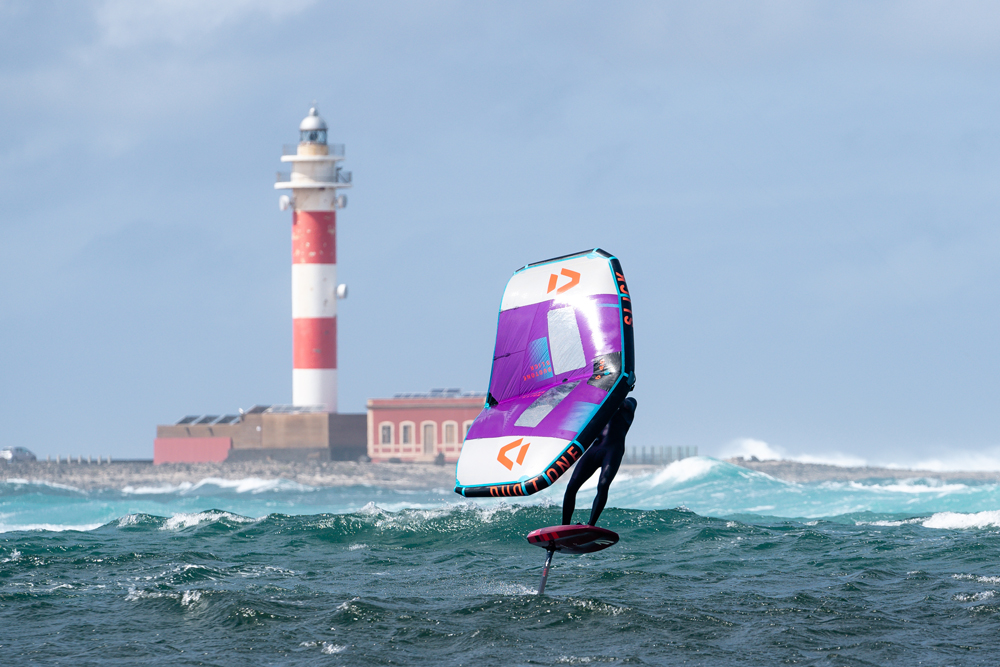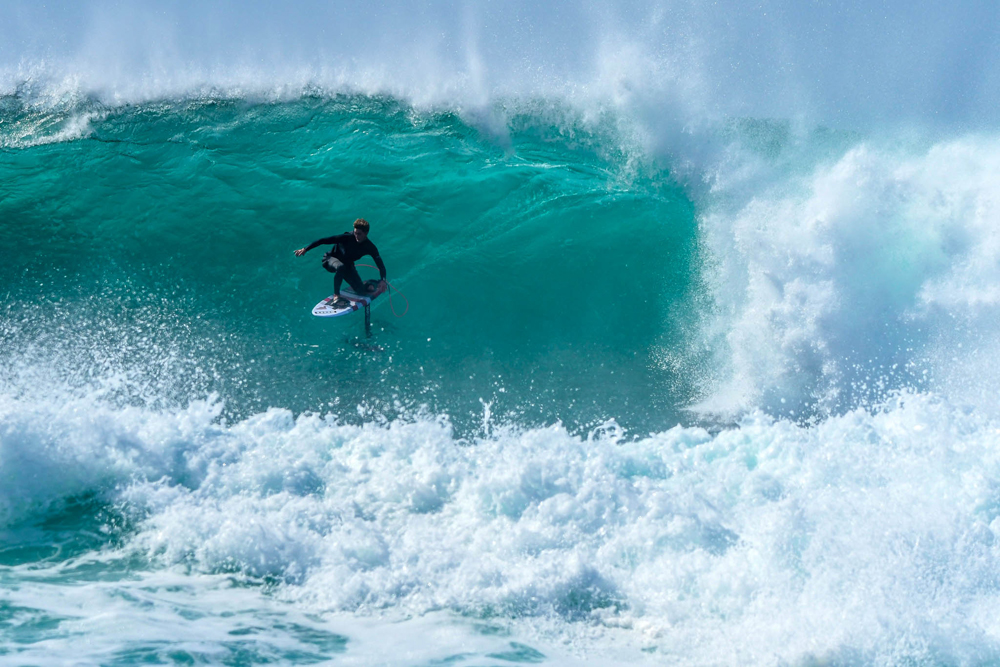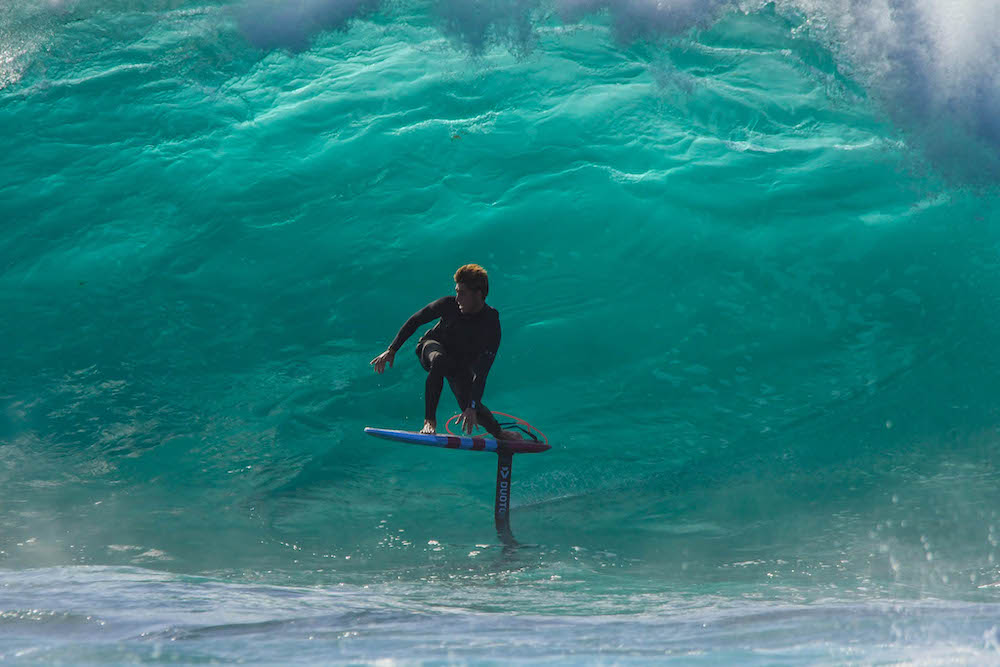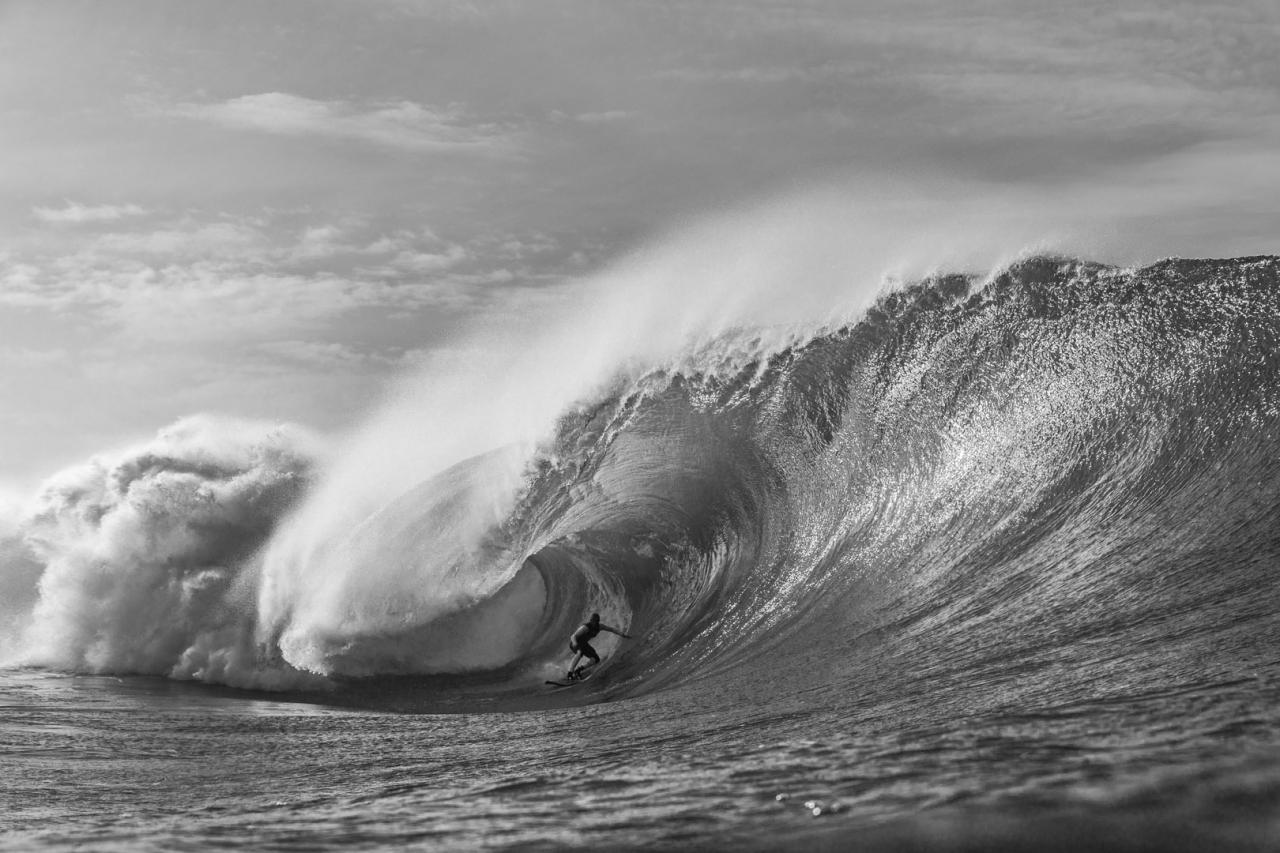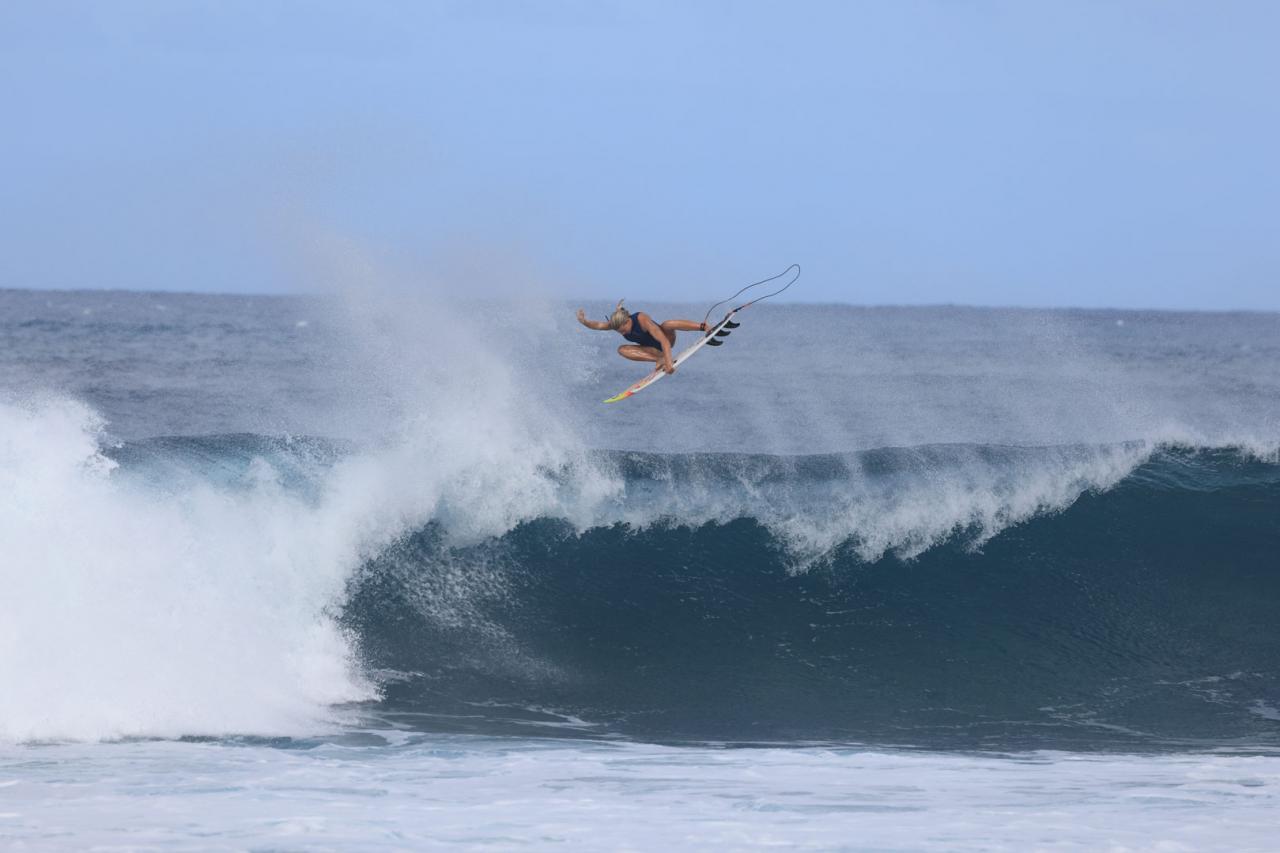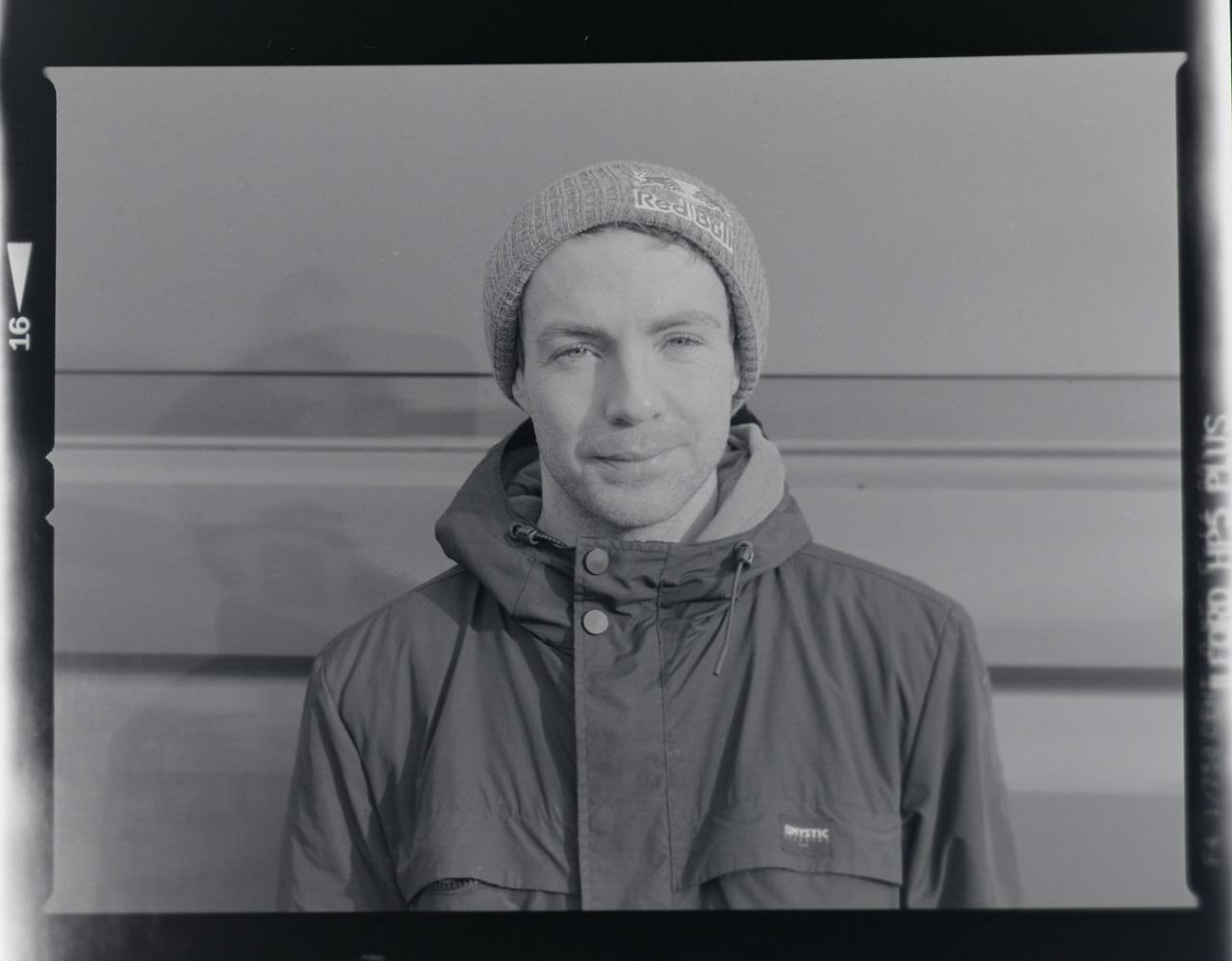Clément Rosayro, a.k.a. ‘The Basque Diamond’, is a true watersports swiss army knife.
Clément is always in motion and is at ease using a diversity of boards in all kinds of wave conditions. Although he excels in surfing, longboarding, kiting, wing foiling and foiling, he surprised the French nation recently with his skill in SUP surfing by becoming one of the best riders in France, if not worldwide.
In 2019, this rise to success included Clément’s win in the prestigious French Championships, a 5th place finish in the APP World Tour’s international SUP Surfing final in Gran Canaria, and his 9th place finish at the ISA World Championships.. These recent competitive accomplishments are proof of his skills and determination, but the young Basque surfer doesn’t want to stop his ascension after such a stellar 2019 season. Let’s meet the young rider, full of talent, who is undoubtedly still on the rise.
L. Nevarez: Hi Clément. We’ve seen you for a few years now on the SUP surfing scene but also understand that you also rip many other watersports. Can you tell us about the starting point of your journey?
Clément: I started surfing at the age of six at ‘’la Côte des Basques’’ beach in Biarritz. My dad had been surfing for a long time and It quickly became a passion for me. I was lucky because instead of taking me to play in the park next door, my mother picked me up from school with my surfboard and then dropped me off at the beach! My dad had a longboard that I started borrowing from him and soon discovered an exciting approach to surfing. I also had a friend, Jordan Sevellec, who rode SUP boards in the surf and seemed to have really cool times in the waves and in competitions. So I borrowed a big 9ft all-round SUP from the surf club and went surfing with it. It was great to be able to paddle while standing up on the deck of this board, riding the waves from far out and, of course, to feel like I was always moving and exercising the whole time.
L. Naverez: I suppose you then continued to experiment with smaller boards more suited to the waves?
Clément: Jordan told me he was selling one of his boards, a Lokahi 6’8 that was too small for his size. I was taller, but I absolutely wanted that SUP surfboard so I offered to buy it. I couldn't stand on it at first due to the board’s small size and low volume. It was hell, but I managed to catch a wave. I was amazed at how it felt when I did a bottom turn with the paddle digging in the water. It's so great to have a paddle to maximize your turns. In the beginning, during a 1½ hour session, I spent like 1h 15min swimming in the water. It drove me crazy! But once I got the hang of it I wanted to try to compete. I found the SUP competition atmosphere to be amazing, like 1000x more fun and friendlier than what I knew in the surf community.
L. Naverez: What does stand up paddle offer you, compared to surfing?
Clément: I like stand up paddling for a lot of reasons, starting with the physical side of the discipline. It’s really tough to stand up and paddle on a board in the ocean, catch a wave, ride it and then get back to the peak all the while still standing on the board. It is a completely different effort that involves the whole body. Unlike surfing, where you spend a lot of time sitting and waiting on your board, a SUP rider is always in action on a SUP and very mobile at the peak. I also appreciate the view while standing during SUP surfing, which allows the rider to see the sets coming from far off in order to get into perfect position for each wave.
I always loved doing big bottom turns on a shortboard with my hand in the water. In SUP surfing, you can actually put more rail in the water and press harder by off-centering your body from the board because the paddle is like an extension of your arm.
L. Navarez: Who are the stand out SUP surfers in the Basque Country who influence you a lot?
Clément: When I started to SUP surf in Guéthary in 2016, I watched Peyo Lizarazu a lot. He's really impressive and has a very powerful bottom turn. He’s goofy-footed like me so he rides the wave on his backhand. I carefully considered his style, his solid turns and which boards he was riding. Also, Pierre Rollet and I have had a few good sessions in the past. He’s inspired me.
Today when I go to the water to SUP, I often meet Philippe Liveneau (Leny Artist). He has been riding stand up paddle boards for a while now and has SUP surfed all the classic reefs for many years. He is respected by the surfers and really committed. I like surfing with him.
L. Navarez: Do you train in SUP surfing with a specific program or do you just try to surf as often as possible?
Clément: I try to spend a lot of time in the water and do a lot of video analysis when my dad is filming me. I analyze my rides and try to progress in this way. Sometimes I call on a few high level surfing friends who can help me unlock a movement or figure out a problem I see in a video, which is very helpful. In terms of external physical preparation, I don't have a specific program but I try to do other sports on the side. We recently got really into tennis with a few friends; we're having a lot of fun and it makes us run and work our legs. I did a lot of Pala (traditional Basque sport with a racket) when I was younger, and I was also swimming and participating in life saving training before I was 18. I did freediving training for four years to get ready for the big wave sessions. In winter in Fuerteventura, every morning we do 30 minutes of physical preparation with kettlebells, which are such versatile weights that allow the body to work in a fairly global way.
L. Navarez: You are one of the leaders of the young generation of French SUP riders, how would you describe this scene, which is a little scattered geographically?
Clément: We have massive talent in the French stand up scene, including the Bouyer Brothers, Alexis Daniel and of course Ben Carpentier. These guys have long represented France in the biggest world events just like Antoine Delpero or Peyo Lizarazu did a few years before them. All of these surfers paved the way for French SUP and we see other younger riders (like me) coming into competitions more recently, like Alex Bicrel, Antonin Salaverria or Arthur le Menn, to name a few. I find it very positive that we are a generation of SUP riders who are also open- minded to other disciplines in addition to shortboarding. We have a global approach to all watersports.
L. Navarez: Is a multidisciplinary approach the most relevant for you?
Clément: Yes. I think that apart from the top level shortboarders who only have to train in one discipline to be on top of their competitive scene, sticking to one sport for other surfers is really a big mistake in my opinion. I encourage people to open up their minds to other watersports in order to experience new ways of reading the water. It is also important to be able to adapt according to the crowds that we have on certain spots or choosing what to ride according to the different kinds of waves. Ultimately, the main goal is to have as much fun as possible and to have a smile on your face when you get out of the water whether it's longboard, SUP, foil, kite, wing or surf. This last one obviously remains the basis of all the other disciplines that I like. The many hours I have spent shortboarding have helped me a lot to quickly progress in all the other disciplines; they are all linked in the end.
L. Navarez: Kiteboarding still requires a very specific learning in order to understand the wing and the wind. Did you learn on your own?
Clément: I often saw kite-surfers in the water when I was surfing at La Madrague (Anglet) in the afternoons when there was a thermal breeze. Unlike most of the other surfers,who complained about their presence, I was fascinated watching the kiters ride the waves. One year we went on vacation to the Canaries in Fuerteventura and I asked my dad if we could do a kite course together. That's how I met Tommy, a kite instructor who taught me the discipline very rigorously. In five days I learned a lot and I was hooked. As with stand up paddling, I like the dynamic and physical aspect of the kite. We are always moving in the water, we are not bored for a second.
L. Navarez: With the arrival of foiling, you added another weapon to your arsenal. Tell us how it changed your approach to other watersports?
Clément: I saw a few guys surf foiling and SUP foiling around my place when there were no real waves. At first, I wasn’t too interested. I knew that the gear was very expensive. Little by little, I met a lot of guys who told me that I had to get started on foiling because of the great feeling it provided. They all said it would suit me well. Then, I saw riders like Kai Lenny connecting three to four waves in a row. That got me interested! One day I decided to go for it. It was a revelation especially since the equipment evolves quickly, it allows us to progress quickly. Foiling is so intense because it allows you to connect the waves while pumping. In a 30- minute session I can be as stoked and tired as if I've been surfing for two hours! Foiling has opened up a lot of new doors for me to have fun in less than desirable conditions.
L. Navarez: I think about wing foiling when you say that. This new discipline is one you seem particularly involved with for a year now. How would you describe this other side of your game ?
Clément: With the wing, I have to admit that I didn't believe in it at the beginning. I didn't have a very good feeling the first time I tried it. I found it a bit slow compared to the kite. Then the wings quickly evolved the same as the foils did which allowed them to become even more efficient. But generally, I would say that the practice of the sport itself evolved so fast that I realized it was raging. I have become more invested in it this past year and now I'm really having fun with it. Winging can be done in all kinds of wind and water conditions. Today if the ocean is flat, I like to go wing foiling. With the wing, I can go for a ride sidewind and then come back in a cool downwinder, surfing the bumps. This new sport gives us an incredible liberty of movement. It’s very complementary to the other disciplines I practice.
L. Navarez: With the wing, how was your learning process ? Did you feel help from your kiting and foiling background?
Clément: Of course my experience with foiling in the waves, kiteboarding and windsurfing, made it easier for me to learn wing foil. But honestly, it remains a relatively easy access discipline compared to some others. Wing foiling is not that complicated when you give yourself the means to learn in the right conditions and not skip any step in the progression. I often compare the wing to a big parasol that you hold in your hands and place where the wind is. If you imagine this, you quickly understand how the wing works. It is much more intuitive and less dangerous than learning to kite which remains a practice that can lead to serious accidents. In the wing, we have the danger caused by the foil but we learn to control it after a few sessions.
L. Navarez: What gear do you use at the moment?
Clément: For wing foiling, I use the Fanatic Sky wing 5'0 which is 75L. It is really efficient, super stable and bullet proof with a reinforced construction. For the foils, I like the Fanatic Aero 1250cm2 high aspect with aluminum mast and fuselage. I recently received the new full carbon models! I also use the thinner and lighter Duotone foil models with 950, 700 and 560 cm2 front wings. I have the latest Duotone Slick wing in 3.5 and 4.5m2 with the carbon boom. It's impressive the weight gain compared to the aluminum model. I couldn't believe it! The Slick wing is more playful. I know that opinions differ, but personally I love the boom. I find it super intuitive and practical to quickly hang on at the end of the wave when you're unbalanced, rather than looking for the handles.
L. Navarez: Far from the micro waves that are so exciting for foiling, you are also renowned for big wave surfing where you have made a name for yourself among the best chargers in the Basque Country. Tell us about this adventure?
Clément: When I was a teenager, I wasn't comfortable in big waves. I saw young surfers like Pierre Rollet going alone in the water under enormous conditions in Anglet. That impressed me because I didn't want to get hurt. I've always been careful. My nickname was even 'little cojones' [laughs] when I was an early teenager.
I began surfing bigger waves gradually around the age of 15. I began dedicating myself to more committed sessions in Guéthary where I saw a few of the locals who had bothered me a little at the spot when I was younger. Now, seeing that I liked to ride bigger waves, a couple of the older guys helped me and took me to ride other waves in different places. Ludo Dulou explained to me about the waves but also the safety aspect that accompanies this practice of big wave riding. I owe him a lot.
Apart from the thrills, what I appreciate in big wave surfing is the camaraderie, even the fraternal atmosphere that exists between the riders who surf under these conditions. It is similar to kiting where there is a lot of mutual help between riders to take off or put down the big wings. Big wave surfing is the same. We all watch over each other. I share a lot of sessions with my mate Cornelius and every time he takes off on a wave, I look to see where he comes out of the wave or when he comes back to the surface after a fall. We encouraged each other and pulled each other up until we went to Nazaré in Portugal where we surfed psycho waves. These are incredible experiences and memories that will last a lifetime.
L. Navarez: Just before the Covid-19 pandemic, you had a very prolific end to the 2019 season with very big results. Can you tell us about this very active period?
Clément: In 2018, I had a semi-final in the French SUP championship which gave me a little confidence. It was then I realized that I was able to get solid surfing scores from the judges. Why not try to beat the champions of the discipline one day? The following year in 2019, towards the end of October, I once again found myself amongst the best French SUP surf riders in the national championship in Hossegor. I was happy to reach the Final Round and then win the precious title against Ben Carpentier, Alexis Deniel and Julien Bouyer. The waves were great and I was able to really express my surfing. I was very surprised to be able to beat such strong and experienced guys.
L. Navarez: This result helped you to secure your place on the French Team to go to the ISA World Championship in El Salvador a few weeks later. Another awesome adventure?
Clément: I knew the competition in El Salvador was going to be on a long right and pointbreak, so I trained really hard before setting off. My buddy Philippe Liveneau had already surfed the contest spot in El Salvador so I surfed with him in order to get as much advice as possible. Once I was in Salvador, I was immediately confronted with the top SUP surfers of the world among the Brazilians who executed very radical maneuvers in the freesurf sessions. I was impressed because I had only seen them on video until then. I learned a lot from my coaches but also from Benoit (Carpentier) who gave me great advice during the video analysis. This gave me confidence. Even though I hoped to go further in that competition, I managed to have a good contest and placed 9th overall which is great! I was lucky to have such an experience with an amazing rider as Benoit as a teammate. It comes as no surprise that he ended up winning the world title after a flawless run on his waves which suited his surf style perfectly. With France's team victory, it was truly an event that will remain in my memory for a long time.
L. Navarez: You came back from El Salvador in 2019 and headed straight to Gran Canaria for the final event of the APP World Tour professional circuit where you made a strong impression there as well. Tell us how you lived that?
Clément: It was great to be able to move to the next event so quickly and match up with the world's best riders again at Las Palmas de Gran Canaria which is located only three hours by plane from my home. The APP organization was top-notch and the competition had incredible conditions, offering a long wall where we could surf several big maneuvers. This wave at El Loret suits both backside and frontside surfing. It was fantastic that everyone got to surf at their best; a real show! I'm happy with my run. I managed to find my own pace and put out some solid scores in order to advance to the quarterfinals at this super high level event. I feel like I've improved my SUP surfing a lot and taken a step forward in my confidence that will help me be more successful in these kinds of big competitions in the future.

